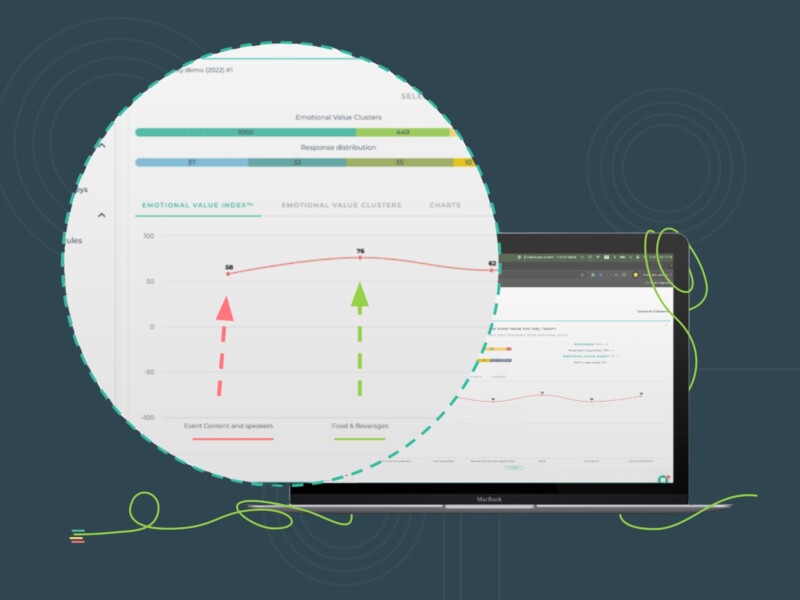NPS is a metric that measures your customers’ likeliness to be your advocates. It was first introduced as “The One Number You Need to Grow.” It was and still is a well-applauded metric in the realm of CX.
It seemed that gauging customer experience through a simple question of “How likely are you to recommend the business to others” really hit the sweet spot for CX professionals.
Then started the questions on its superiority, the controversies, and the overall doubt of whether NPS alone is sufficient for brands to win customers.
Here are some limitations of NPS that cannot be ignored!
1. NPS’s depth of insight falls short
Insights are critical to understanding customer behavior and expectations more meaningfully. In this regard, a metric like NPS which focuses on one aspect of loyalty-advocacy, falls short in its delivery.
NPS does provide a simple measure of customer sentiment that we can assume to be a result of the overall buying journey. However, the reality could be different. It also doesn’t unearth the complexities of modern customer experiences. This is because there’s a myriad of reasons contributing to customer satisfaction and how they perceive the buying experience.
Furthermore, CX assessments demand a more nuanced approach that considers various facets of customer interactions, emotions, and satisfaction levels that extend beyond a single rating.
More specifically, the business will find it essential to incorporate multiple metrics to get a well-rounded understanding of their customer.
2. Evolving customer expectations
Customers are only going to set the bar higher with every improvement in your business and with every development in the market. It means you will have to keep innovating, serving better, and refining the buying journey.
If you are to cater to evolving customer expectations with agility, you need to up your CX strategy with better metrics. NPS alone cannot capture the intricacies of their demand. But this doesn’t mean it’s less important. You will still require NPS to keep a check on the loyalty and retention levels.
But today’s customers’ inclination to recommend your brand goes beyond a great product that fulfills their needs. Their preference to do business with you will also depend on how well you engage with them, the quality of your customer support, and your role in corporate social responsibility. It’s an era of cancel culture, staying relevant and vibing right also plays a role.
You need to incorporate metrics that reflect personalized experience, seamless interactions, and emotional connections. There’s an increasing need to pair NPS with EVI® and CES to get an accurate and comprehensive understanding of what makes your customers feel great and what pain points are deal breakers.
3. Complex customer journeys
With the expansion of omni-channel interactions and touchpoints, customer journeys have become increasingly intricate and even difficult to capture. In such a scenario, relying solely on a metric like NPS- a metric specific to the post-purchase phase can lead to skewed interpretations.
The limitations in the applicability of NPS also mean you overlook the other stages and different channels customers use to fulfill their purposes.
If brands are to capture the quality of overall CX effectively, businesses need metrics that can measure and assess the impact of every touchpoint on the entire buying journey.
In this case, a metric like EVI® that can be used to measure the buying journey at an individual and holistic level will be very resourceful. You can use it to measure and improve any touchpoint or channel.
The versatility of the metric also enables brands to make better comparisons between touchpoints, and thereby design better improvements.
Conclusion
In an ever-evolving landscape, the limitations of NPS necessitate a more comprehensive and diverse set of CX metrics to capture customer interactions, emotions, and preferences more accurately. As far as we can predict, NPS will remain an important measure of loyalty, favored for its simplicity. However, it won’t be the yardstick of good CX, especially with other metrics like EVI® taking over the battlefield.
Webinar recording: Integrating NPS and Customer Emotions for Leveling Up CX Insights
NPS is a powerful tool, but to truly capture the voice of the customer, we need to delve deeper into their emotions. At this webinar, Jaakko Männistö shared his tips on how to improve the quality of your CX insights and make them more actionable by integrating NPS with customer emotional experience data.




